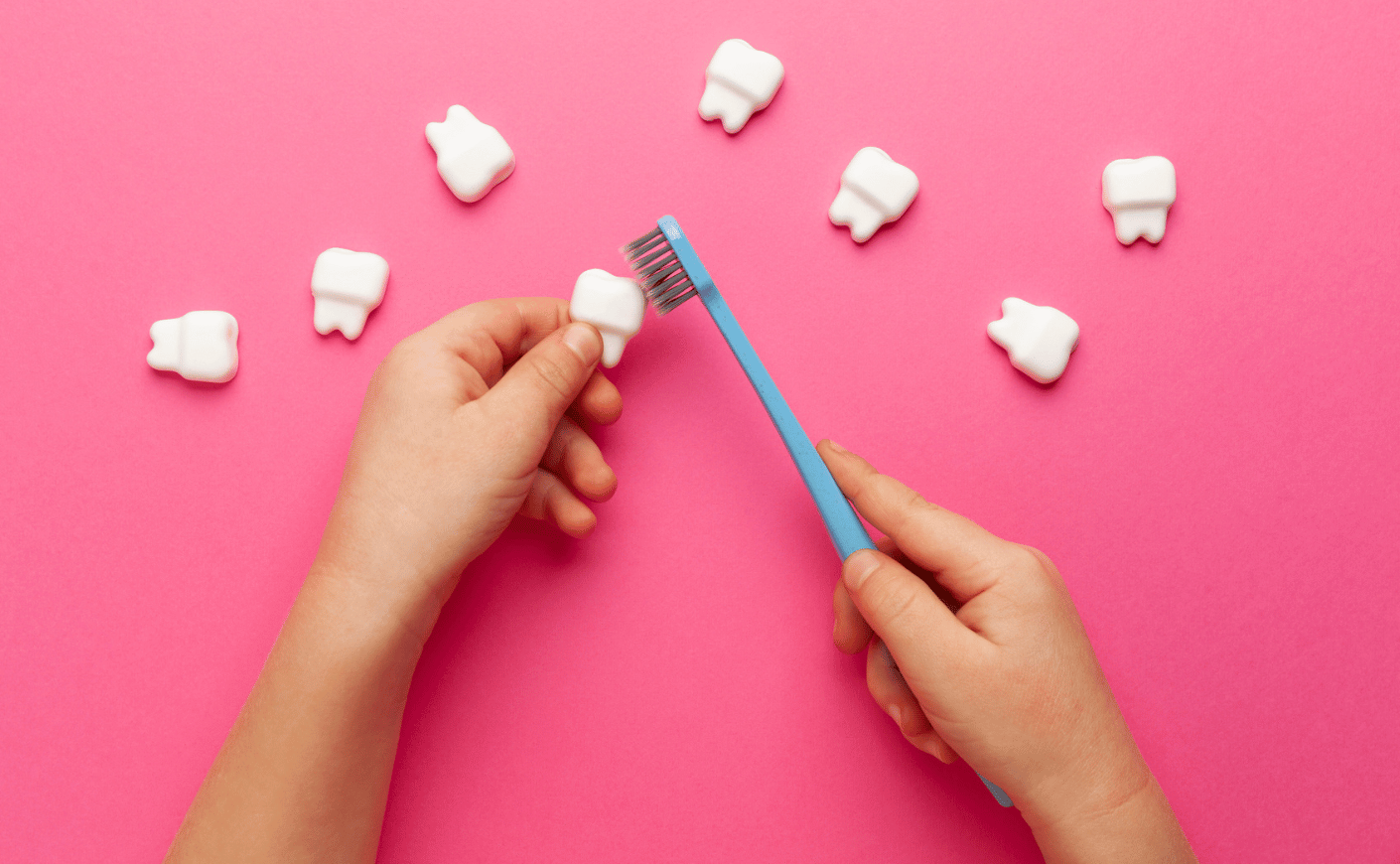Amber Lovatos, a proud Texas native, grew up as a first-generation Mexican-American; her mother and father immigrated to the U.S. before she was born. No one ever taught Lovatos’ Spanish-speaking parents the importance of dental hygiene, and their daughter paid the price.
The now-registered dental hygienist was 13 years old the first time she stepped foot in a dentist’s office. (Medical professionals recommend kids start getting their teeth checked as early as one year old, or within six months of the first tooth appearing.) Lovatos had developed holes in her molars and was in extreme pain, but root canals weren’t in the cards because of the high cost. “Instead, my mom took me home and we ground up cloves, mixed them with water, and stuck them into the holes of my teeth,” Lovatos says of the temporary at-home fix. “I would try to sleep away the pain.”
Lovatos doesn’t blame her parents for that lack of professional dental care. “My parents both have a fifth-grade education,” she says. “My dad had to work for his food from a young age, and my mom tells me stories about having one pair of underwear that she would wash every day. Considering that, do you think they had access to toothbrushes, toothpaste, and floss?”
Almost half of American kids have at least one cavity by age six.
Unfortunately, oral care ends up on the back burner for many children across America — especially those living in low-income and underserved communities. In fact, Crest and Oral-B recently surveyed more than 1,000 parents from different socioeconomic backgrounds about discrepancies in oral care, and the findings were startling: Nearly 50 percent of those parents believed that obesity is the leading cause of chronic disease among children in the U.S. But tooth decay actually takes the number one spot. And almost half of American kids have at least one cavity by age six.
Lack of access to affordable dental care and insurance, transportation barriers, anxiety around going to the dentist, and minimal education about how to take care of your teeth and gums are just a sample of what’s contributing to the country’s decay in oral care.
For Lovatos, it wasn’t until she was 18 years old and qualified for Medicaid that she could finally get the dental care she so desperately needed. Once she had insurance, she got some teeth professionally removed and received much-needed crowns, fillings, and root canals. “I remember after getting proper dental care, I was in my parent’s kitchen eating and I went to flinch because I was so used to food getting into my teeth and hurting me,” says Lovatos. “But there was no pain — and that was new for me.”
These experiences inspired Lovatos to become a public health dental hygienist, with a focus on serving low-income communities. “I strongly believe in education,” says Lovatos. “The problem I have with what happened to me growing up is that these issues were preventable, through access to products and education.”
Lovatos is partnering with Crest and Oral-B to offer free dental services, education, and products in underserved communities in cities like Portland, Austin, and Detroit. It’s a full circle moment: She can now give the type of care to those in need that she desperately wished for as a young girl.
Crest and Oral-B’s mission, #ClosingAmericasSmileGap, not only raises awareness of oral health disparities, but also works to bridge the divide by offering free dental care for children and adults, access to products, educational resources — and by increasing representation in the field ,by providing scholarships to those going into the dental profession. It’s important that more kids see a professional who not only looks like them and speaks their language, but understands their unique dental needs.
Keeping your teeth tidy is also a critical part of aging well. “I love working with children, but when those kids age out at 18 and no longer qualify for certain dental services, they don’t stop being low-income or uninsured,” explains Lovatos. “But at that age, they have responsibilities and may have to help the family — and so often, dental care goes on the back burner. If we want our communities to be successful, then we also need to help our adults be successful.”









